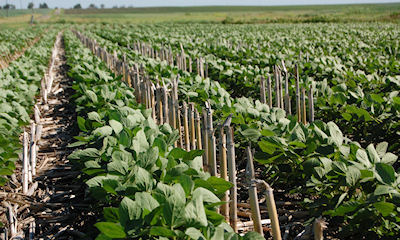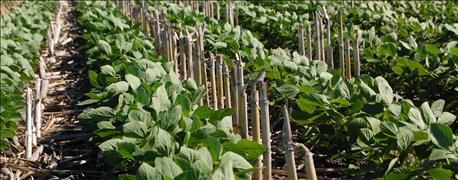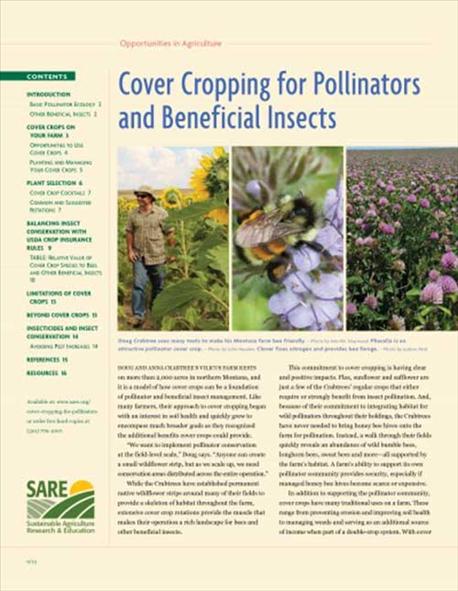February 4, 2016

Careful planning and consideration are part of every producer’s short- and long-term management strategies. Deciding to use cover crops has become a more common practice to increases soil health and weed management in Michigan fields. Often overlooked is the benefit that cover crops can provide for pollinators and other beneficial insects. The newest Sustainable Agriculture Research and Education (SARE) publication, “Cover Cropping for Pollinators and Beneficial Insects,” can help you get more millage out of your cover cropping system with the additional benefits for these important insect populations.

New publication helps growers with pollinator-friendly cover crops
Cover crops are beneficial for many reasons, including soil health, weed management, nitrogen fixation or excess nitrogen absorption, water management and pest management. There is a learning curve for implementing and managing this addition in rotations. Not all cover crops or implementation and termination methods serve pollinators and beneficial insects. Planting, flowering and harvest dates all effect the pollinator and native insect populations.
Beneficial insects and pollinators are essential for all types of producers. Michigan is the second most diverse agriculture state behind California. That agriculture diversity is supported by the landscape and natural predators and pollinators. As we know, the honey bee is in decline and while there are efforts to reverse this, we can also provide habitat and food sources for our native pollinators to get this important job done. Cover crops provide more than just a pollen source for pollinators; they also serves as a food and habitat source for beneficial insects that can reduce your pest population.

There are many questions about how to choose what cover crops are best for you particular operation. There is no one size fits all answer, but with the resources mentioned here and the help of Michigan State University Extension agriculture educators, you can find out how to pick the best combinations for your operation.
SARE has numerous resources for you in this quest for information. Not only will “Cover Cropping for Pollinators and Beneficial Insects” be a resource to you, but there are also topic rooms with numerous additional resources about cover cropping methods, rotations and species. Take a look at SARE’s Cover Crop website for more information. For additional information about cover crops or to learn more about SARE programs and resources, contact me at [email protected].
Baas writes for Michigan State University Extension
You May Also Like




